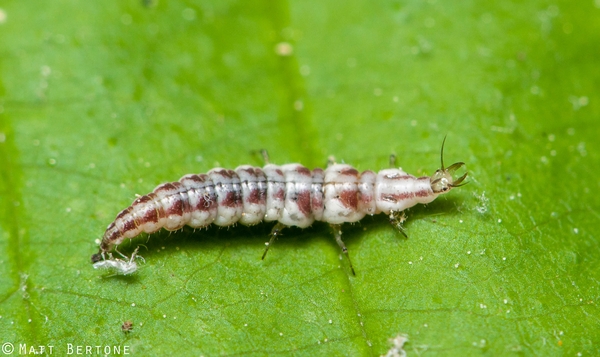The Ultimate Guide To Eco Bed Bug Exterminators Dc
The Ultimate Guide To Eco Bed Bug Exterminators Dc
Blog Article
The Buzz on Eco Bed Bug Exterminators Dc
Table of ContentsThe Only Guide to Eco Bed Bug Exterminators DcThe Main Principles Of Eco Bed Bug Exterminators Dc The Main Principles Of Eco Bed Bug Exterminators Dc All About Eco Bed Bug Exterminators DcThe 6-Minute Rule for Eco Bed Bug Exterminators Dc
Since chemicals are hazardous, they are also possibly dangerous to humans, pets, various other organisms, and the environment. Individuals who use pesticides or routinely come in contact with them must recognize the family member poisoning, possible health impacts, and preventative procedures to lower exposure to the products they use. Threat, or risk, of utilizing chemicals is the possibility for injury, or the level of risk involved in utilizing a pesticide under an offered collection of problems.
However, applicators can lessen or nearly get rid of direct exposure-- and hence reduce risk-- by following the label instructions, utilizing personal safety garments and equipment (PPE), and dealing with the chemical appropriately. For instance, even more than 95 percent of all chemical exposures originate from dermal exposure, mostly to the hands and forearms. By wearing a pair of unlined, chemical-resistant handwear covers, this sort of direct exposure can be virtually removed.
The hazardous results that happen from a solitary direct exposure by any kind of course of entrance are called "severe results." The four paths of exposure are dermal (skin), breathing (lungs), dental (mouth), and the eyes. Intense poisoning is established by checking out the dermal toxicity, inhalation poisoning, and oral poisoning of guinea pig.
The Definitive Guide for Eco Bed Bug Exterminators Dc
Acute poisoning is measured as the amount or concentration of a toxicant-- the a.i.-- required to eliminate half of the animals in a test population. This action is usually revealed as the LD50 (dangerous dose 50) or the LC50 (dangerous focus 50). Additionally, the LD50 and LC50 worths are based upon a solitary dosage and are recorded in milligrams of pesticide per kilo of body weight (mg/kg) of the guinea pig or partly per million (ppm).
The reduced the LD50 or LC50 value of a pesticide item, the greater its toxicity to human beings and animals. Pesticides with a high LD50 are the least toxic to human beings if used according to the instructions on the item tag. The persistent toxicity of a chemical is determined by subjecting examination pets to lasting exposure to the energetic component.
The persistent toxicity of a pesticide is extra challenging than intense toxicity to establish via laboratory analysis. Products are categorized on the basis of their family member severe poisoning (their LD50 or LC50 values). Pesticides that are classified as highly harmful (Toxicity Classification I) on the basis of either dental, dermal, or breathing poisoning have to have the signal words risk and poisonous substance published in red with a head and crossbones symbol plainly displayed on the front panel of the bundle tag.
The intense (solitary dose) oral LD50 for chemical items in this team ranges from a trace amount to 50 mg/kg. Direct exposure of a couple of drops of a material taken by mouth could be deadly to a 150-pound person. https://ecobedbug3xt.weebly.com/. Some chemical items have just the signal word threat, which tells you nothing concerning the acute poisoning, just that the product can cause extreme eye damages or serious skin inflammation
5 Simple Techniques For Eco Bed Bug Exterminators Dc
In this category, the acute oral LD50 ranges from 50 to 500 mg/kg. A tsp to an ounce of this product might be fatal to a 150-pound individual (bed bug treatment). Chemical products identified as either slightly toxic or reasonably harmless (Poisoning Categories III and IV) are required to have the signal word care on the pesticide tag

All pesticide poisoning values, including the LD50, can be located on the product's Material Safety Information Sheet (MSDS) - bed bug treatment. Pesticide tags and MSDS can be gotten from merchants or produces. Additionally, a lot of products also know that can be found online. The signs and symptoms of chemical poisoning can range from a light skin inflammation to coma or even death.
Since of potential health problems, pesticide individuals and handlers have to acknowledge the typical signs and signs and symptoms of chemical poisoning. The effects, or symptoms, of chemical poisoning can be generally specified as either topical or systemic.
Not known Incorrect Statements About Eco Bed Bug Exterminators Dc
Dermatitis, or swelling of the skin, is accepted as the most generally reported topical result connected with pesticide exposure. Some individuals tend to cough, hiss, or sneeze when subjected to pesticide sprays.
This symptom generally subsides within a few mins after an individual is removed from the direct exposure to the toxic irritant. Nevertheless, a response to a chemical item that creates someone not just to sneeze and cough but additionally to create extreme intense respiratory signs and symptoms is a lot more likely to be a true hypersensitivity or allergy.
Systemic results are quite various from topical impacts. They frequently take place away from the initial point of contact as an outcome of the chemical being soaked up right into and dispersed throughout the body. Systemic impacts commonly include nausea, throwing up, tiredness, migraine, and intestinal problems. In innovative poisoning situations, the individual might experience adjustments in heart rate, problem breathing, convulsions, and coma, which can cause death.
Report this page